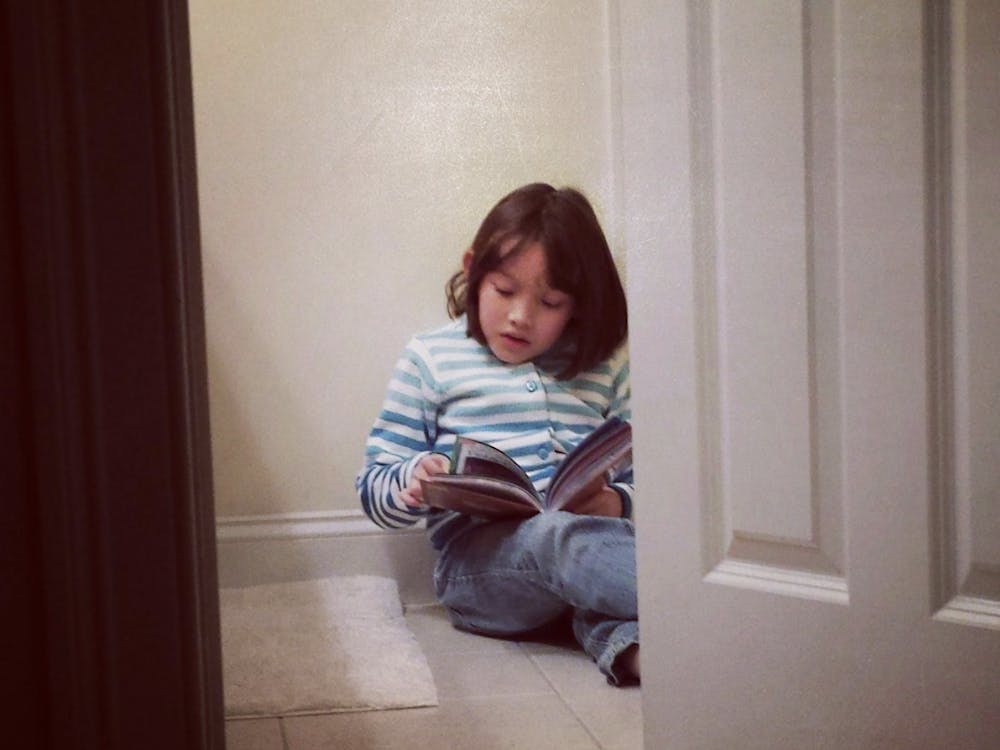Blue Velvet (1986), directed by David Lynch, is a suspenseful detective story that explores the fine line between reality and our dream states.
Jeffrey Beaumont (Kyle MacLachlan) returns to his hometown from college because his father is in recovery after having a stroke. While strolling around his neighborhood, Beaumont happens upon an ear in the grass that has become infested with insects. Beaumont brings the body part to the police and, when the detective alludes to the fact that the ear may be a piece of evidence in a case, he is intrigued. The detective’s daughter, Sandy Williams (Laura Dern) confronts Jeffrey about the mystery, and the two become fast friends. Sandy, innocent and beautiful, hesitantly helps Jeffrey pursue the case on his own.
Jeffrey becomes increasingly involved with the case, discovering the mysterious and alluring Dorothy Vallens (Isabella Rossellini) and the terrifying, psychopathic villain Frank Booth (Dennis Hopper). In his self-proclaimed effort to protect Dorothy from Frank, Jeffrey becomes so entwined in the case that it is unclear whether he is truly on a mission to help or whether he is indulging in his own latent perversion.
Music also plays an important role in Blue Velvet. Dorothy herself is a nightclub singer. Her smooth, jazzy voice draws both Jeffrey and Frank.
Lynch’s surrealistic style leads the viewer to question how much of the film is representative of Jeffrey’s own subconscious, dream-like state. Light pinks and pale blues comprise the shots of Jeffrey’s neighborhood and the time he spends with Sandy, while dark blues and reds enhance scenes involving Dorothy and Frank.
These techniques serve to juxtapose the classic good girl Sandy and the seemingly perfect suburban neighborhood in which she and Jeffrey live with the femme fatale Dorothy and the seedy life that Jeffrey is exposed to when he spends time with her. Through Dorothy, Jeffrey discovers more vulgar aspects of his personality with regards to both sex and violence. These discoveries suggest that Jeffrey is exploring his subconscious Freudian desires and behaviors.
In a critical moment in the film, Frank notes that he and Jeffrey are similar. Frank is a maniacal and absurd character; his most brutish urges and instincts are openly apparent. He is perhaps most frightening because he represents desires that most of us choose to repress or of which we refuse to be aware.
Lynch also explores the imperfect in seemingly perfect settings. The world he portrays is at first deceptively idealistic. The dark underbelly that lies just beneath is uncovered by Jeffrey’s involvement in the mystery, suggesting the utopia is frighteningly superficial and in fact similar to its opposite.
The Talks asked Lynch in an interview about his decision to portray the world in less than a perfect light.
“If you saw a film and the beginning of the film was peaceful, the middle was peaceful, and the end was peaceful – what kind of story is this? You need contrast and conflict in order to tell a story. Stories need to have dark and light, turmoil, all those things,” Lynch said.
While many viewers are often shocked and greatly disturbed by the film, others enjoy speculating about the meaning and symbolism behind Blue Velvet. There are certainly a variety of interesting themes and underlying meanings to deliberate.
In an interview with Cineaste, Lynch explains his own thoughts.
“If you could put into words the symbolic equivalent to most of my visual concepts, no one would probably want to produce my films,” he said. “I don’t know what a lot of things mean. I just have the feeling that they are right or not right. My work is full of abstract ideas but they are ideas I know about. My first inspiration is life, therefore everything makes sense because it is linked to life.”
The beginning and end of Blue Velvet are particularly symbolic. The images Lynch chooses to show on either end of his film encapsulate many of the ideas he may have been trying to communicate to the viewer throughout the film. These uncanny, slightly artificial images fit well into Lynch’s bizarre portrayal of the world and the events that occur in it.
Lynch has directed several films, including Mulholland Drive, Eraserhead, The Elephant Man and Wild at Heart. He also directed the television show Twin Peaks.




